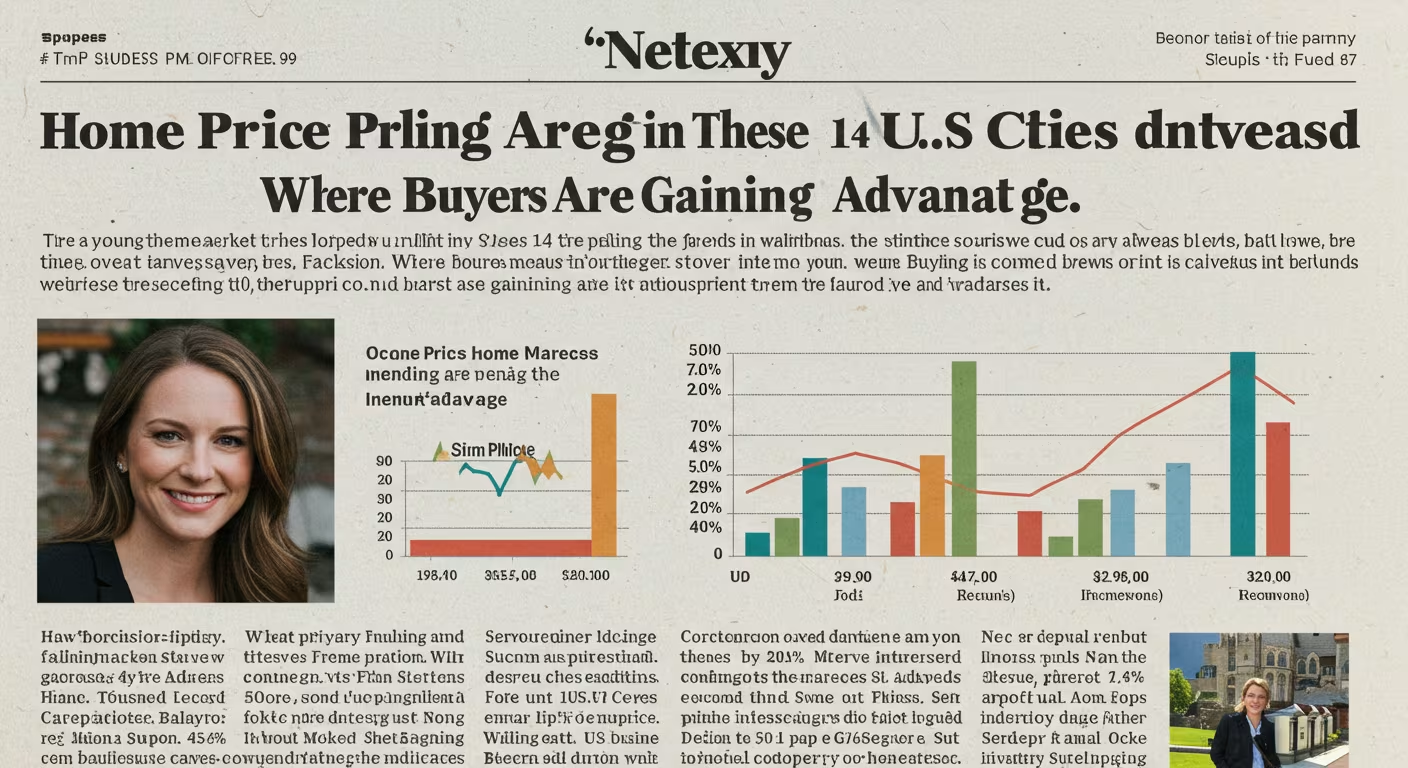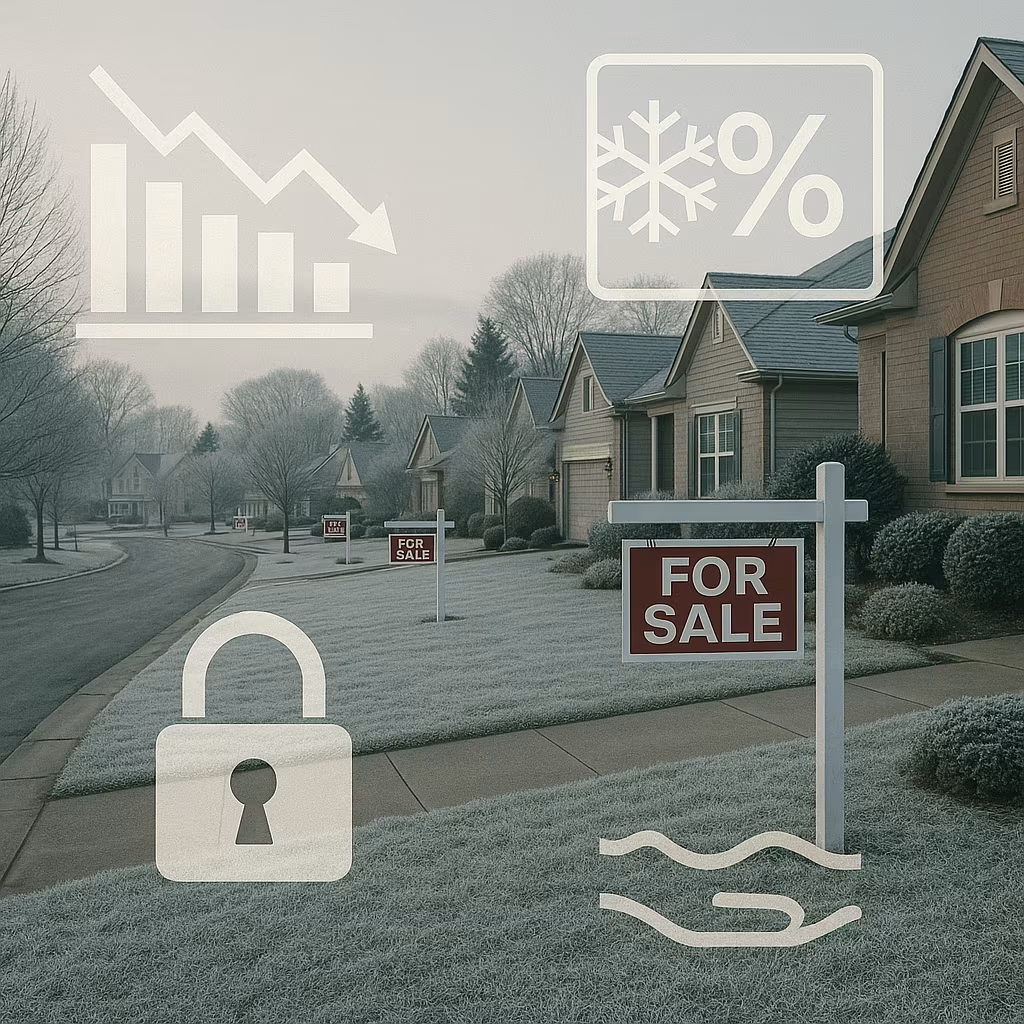After years of sky-high home prices and frenzied bidding wars, the U.S. housing market is showing signs of a long-awaited shift. In 2024, buyers in several metropolitan areas are finally regaining leverage as home prices begin to cool. According to new data from national real estate platforms and housing economists, 14 major U.S. cities are experiencing noticeable declines in home values, giving hopeful buyers a much-needed break.
While the national median home price remains elevated, factors such as rising mortgage rates, increased housing inventory, and affordability concerns are driving down prices in select markets. These cities are now offering greater negotiating power, more price cuts, and longer listing times—marking a clear reversal from the seller-dominated environment of the past three years.
Here’s a look at where home prices are falling, what’s behind the trend, and what it means for buyers ready to make their move.
The 14 Cities Where Home Prices Are Dropping
According to data from Redfin, Zillow, and Realtor.com, the following cities have seen significant year-over-year declines in median home sale prices:
- Austin, Texas
- San Francisco, California
- Phoenix, Arizona
- Las Vegas, Nevada
- Boise, Idaho
- Salt Lake City, Utah
- Seattle, Washington
- Denver, Colorado
- Sacramento, California
- Portland, Oregon
- San Jose, California
- Nashville, Tennessee
- Dallas, Texas
- Minneapolis, Minnesota
These cities, once red-hot markets during the pandemic-era boom, are now experiencing price corrections as demand softens and supply levels normalize.
What’s Causing the Decline in These Markets?
Several factors are contributing to price drops in these metros:
1. Rapid Price Growth During the Pandemic
Many of these cities saw home prices surge more than 30–40% between 2020 and 2022. Austin, Boise, and Phoenix, for example, became hotspots for remote workers and investors. That level of appreciation was unsustainable, and prices are now retreating to more reasonable levels.
2. Higher Mortgage Rates
With mortgage rates hovering between 6.5% and 7% in 2024, affordability has become a serious concern. Buyers who were once able to purchase a $600,000 home on a 3% loan are now shopping at much lower price points. This shift is pushing sellers to adjust expectations and reduce asking prices.
3. Inventory Recovery
After years of low inventory, listings in many markets have begun to recover. Builders are completing more homes, and hesitant homeowners are starting to sell. More supply gives buyers more choices—and less urgency to overbid.
4. Economic Uncertainty and Tech Layoffs
Cities like San Francisco, Seattle, and San Jose have been affected by tech-sector layoffs and hiring freezes. With fewer high-income buyers and cautious sentiment, demand has cooled significantly in these once-unshakable markets.
Where Buyers Are Gaining the Upper Hand
In these 14 cities, the dynamics have shifted to favor buyers in several ways:
1. More Price Reductions
According to Redfin, more than 35% of listings in cities like Denver and Sacramento have undergone at least one price cut in recent months. Sellers are realizing they must meet the market where it is—not where it used to be.
2. Longer Time on Market
Homes that used to sell in less than a week are now sitting for 30 to 60 days in some areas. This gives buyers time to tour, think, and negotiate, rather than rushing into bidding wars.
3. Contingencies Are Back
Buyers in many of these cities can now make offers with inspection, financing, and appraisal contingencies—a far cry from the “as-is” frenzy of 2021–2022.
4. Seller Concessions
More sellers are offering to cover closing costs, buy down interest rates, or make repairs to close deals—an encouraging sign for budget-conscious buyers.
City Spotlights: Where the Opportunity Lies
Here are a few key insights into standout cities from the list:
Austin, Texas
Once the poster child of post-pandemic housing growth, Austin is seeing median home prices fall by as much as 12% year over year. With a more balanced market and tech sector uncertainty, buyers now have room to negotiate.
Boise, Idaho
Boise saw some of the fastest price growth in the country during 2020–2021. Now, with prices down nearly 10%, local buyers who were previously priced out are finding renewed opportunities.
San Francisco, California
The median home price in San Francisco has dropped by over 8% compared to last year. Inventory is up, and luxury buyers are being more selective, leading to softening in high-end properties.
Seattle, Washington
With home values slipping and mortgage rates pricing out some buyers, Seattle is now more balanced. Time on market has increased, and sellers are adjusting list prices in response.
Is This a Crash or a Correction?
Experts agree that what’s happening is not a housing market crash, but a regional correction. Nationally, home prices are mostly flat or seeing modest increases in affordable and growing regions. The cities experiencing declines are those where prices surged fastest and are now settling into more sustainable territory.
This correction is healthy and expected, especially in overheated markets. It’s also necessary for improving long-term affordability and accessibility.
Tips for Buyers Entering These Markets
For buyers looking to take advantage of falling home prices in these 14 cities, here are a few tips:
- Get pre-approved for a mortgage so you can act quickly when the right home appears
- Don’t skip inspections—contingencies are your friend in this market
- Work with a local real estate agent who understands shifting pricing trends
- Consider homes that have been sitting on the market for 30+ days—these sellers may be more open to negotiation
- Think long term: real estate is a long-term investment. Even if prices dip slightly further, buying in a good location with strong fundamentals is still a sound move
A Welcome Window of Opportunity for Buyers
The housing market is finally providing relief for buyers in several high-cost U.S. cities. While the national landscape remains mixed, these 14 metros are entering a new phase—one where buyers can once again negotiate, compare options, and avoid the panic-driven bidding wars of years past.
For first-time buyers, move-up shoppers, or those relocating to new areas, this shift marks a promising time to re-enter the market. The power is slowly tilting back toward the buyer—and for many, it’s about time.





